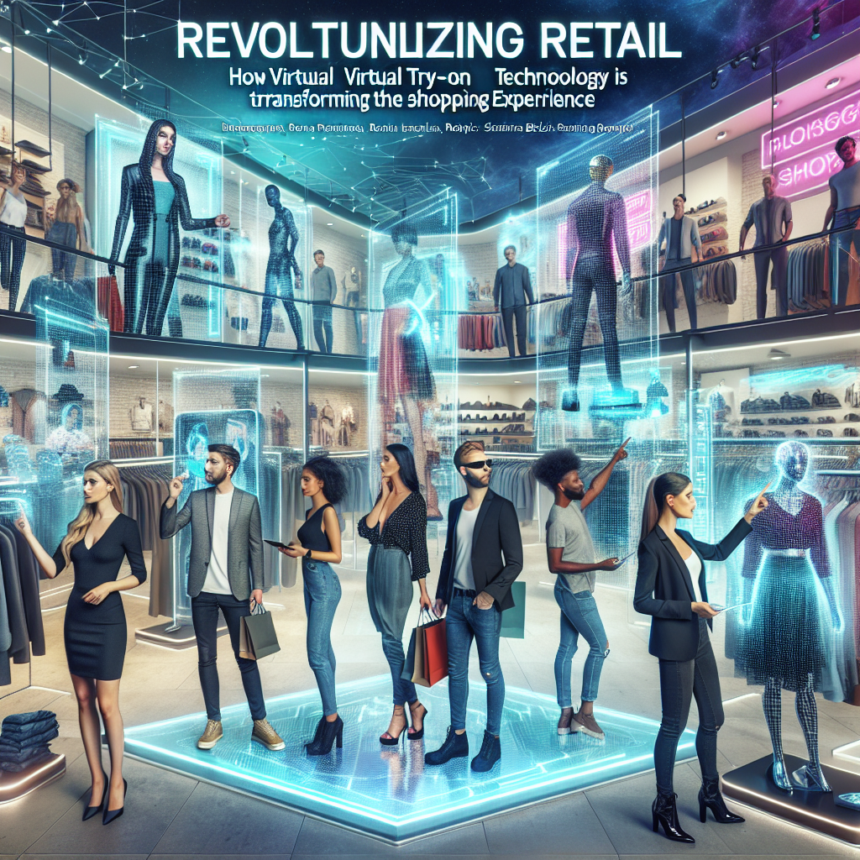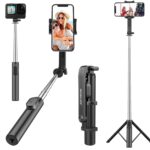In recent years, the retail landscape has evolved dramatically, driven by advancements in technology and changing consumer preferences. Among the most revolutionary innovations is virtual try-on technology, which is transforming the way consumers shop. By bridging the gap between physical and digital experiences, this technology is enhancing customer engagement, reducing returns, and ultimately reshaping the retail sector.
The Concept of Virtual Try-On Technology
Virtual try-on technology allows customers to visualize how products will look or fit them without physically trying them on. Utilizing augmented reality (AR) and artificial intelligence (AI), this technology enables users to overlay digital images of products onto their own likeness or environment. From clothing and accessories to makeup and eyewear, virtual try-ons are turning the traditional shopping experience on its head by integrating the best of both worlds: the convenience of online shopping and the experiential aspect of brick-and-mortar stores.
Benefits of Virtual Try-On Technology
Enhanced Customer Experience
One of the primary advantages of virtual try-on technology is its ability to enhance the customer experience. Shoppers can avoid the hassle of long lines and crowded stores by trying on products from the comfort of their own homes. Furthermore, this technology provides the opportunity to experiment with an array of styles and options, fostering a sense of personalization and satisfaction that is often absent in traditional retail settings.
Reduced Return Rates
One of the significant pain points in online retail is the high return rate, primarily due to consumers receiving products that do not fit or look as expected. Virtual try-on technology helps to mitigate this issue by allowing customers to visualize products in a realistic way before making a purchase. As customers feel more confident in their buying decisions, retailers can benefit from decreased return rates, ultimately improving their bottom line.
Personalization and Customization
As brands increasingly adopt virtual try-on solutions, they can offer personalized recommendations tailored to individual shopper preferences. This level of customization can create an emotional connection between customers and brands, fostering brand loyalty and encouraging repeat purchases. By using AI algorithms to analyze past purchase behaviors and preferences, retailers can present products that are more likely to resonate with individual shoppers.
Accessibility to Diverse Audiences
Virtual try-on technology can also play a critical role in promoting inclusivity within fashion and retail. By utilizing diverse models in virtual try-on experiences, brands can cater to various body types, skin tones, and styles. This inclusivity helps all shoppers feel represented and valued, ultimately drawing in a broader audience.
The Future of Virtual Try-On Technology
The future of virtual try-ons seems promising, with advancements in AR and AI paving the way for even more innovative solutions. Retailers are expected to enhance their offerings, providing features like real-time feedback, virtual styling assistants, and enhanced social sharing capabilities. As the technology continues to evolve, it is likely that the line between the digital and physical shopping experience will continue to blur, fundamentally changing how consumers interact with products and brands.
Additionally, as the younger, tech-savvy generation becomes a larger part of the consumer base, the demand for virtual shopping solutions will likely increase. Brands that adapt to these trends and invest in cutting-edge technologies will hold a competitive edge in an increasingly saturated market.
Conclusion
Virtual try-on technology is revolutionizing the retail experience by enhancing customer engagement, reducing returns, and promoting inclusivity. As this technology continues to evolve, it’s clear that it will play a pivotal role in shaping the future of shopping, making the process more personalized and enjoyable for consumers. Retailers who invest in virtual try-on technology now will likely emerge as leaders in the future retail landscape.
FAQs
1. What is virtual try-on technology?
Virtual try-on technology uses augmented reality (AR) and artificial intelligence (AI) to allow consumers to visualize how products will look on them or in their environment without physically trying them on.
2. How does virtual try-on technology enhance the shopping experience?
It offers convenience for customers, eliminates the need for long queues in stores, and allows users to experiment with various products and styles from home.
3. How does virtual try-on technology reduce return rates in retail?
By helping customers visualize products realistically before purchase, shoppers feel more confident in their selections, leading to fewer mismatched items being returned.
4. Is virtual try-on technology only applicable to clothing?
No, it can be applied across various retail sectors, including eyewear, cosmetics, accessories, and home decor, among others.
5. What is the future of virtual try-on technology?
Future advancements are likely to include more personalized recommendations, real-time feedback, and enhanced social features, further blurring the lines between digital and in-store shopping experiences.











